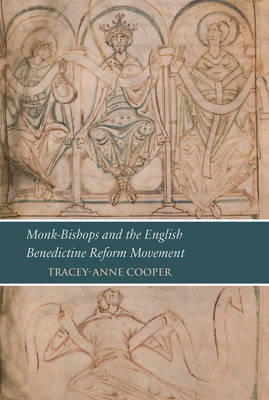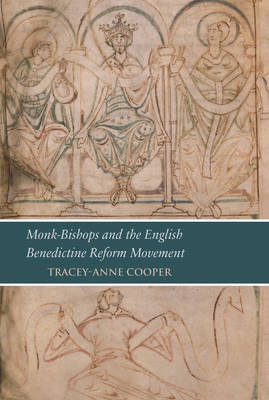
- Retrait gratuit dans votre magasin Club
- 7.000.000 titres dans notre catalogue
- Payer en toute sécurité
- Toujours un magasin près de chez vous
- Retrait gratuit dans votre magasin Club
- 7.000.0000 titres dans notre catalogue
- Payer en toute sécurité
- Toujours un magasin près de chez vous
Monk-Bishops and the English Benedictine Reform Movement
Reading London, Bl, Cotton Tiberius A. III in Its Manuscript Context
Tracey-Anne Cooper
145,45 €
+ 290 points
Description
London, BL, Cotton Tiberius A. iii is a compilation manuscript made at Christ Church, Canterbury, (arguably) in 1020-1023. Its ninety-four texts and two illustrations seem to present an incompatible miscellany: a monastic customary and texts concerning pastoral care; private prayers and public liturgical forms; scientific treatises and prognostics. When viewed as a product of the third generation of the English Benedictine Reform, and an episcopate that was almost entirely monastic, however, the codex begins to make sense as a reflection of a reform movement that involved much more than the ejection of some clerks and the establishment of a few Benedictine monasteries and monastic sees. A more thorough-going and longer-lasting attempt to create a Holy Society in England is witnessed in the sum of the reform's achievements - establishing a unified monastic episcopate, recovering and protecting lands and wealth, introducing liturgical innovations, expanding book production and decoration, focusing on teaching and learning, fostering saint cults and the cult of the Cross and developing effective pastoral care - all witnessed in the Tiberius manuscript. The synergy produced by compiling this manuscript demonstrates the breadth of this reform which coupled monasticism with both pastoral care and erudition. The manuscript unites different layers and ages of the reform, not as a reverent enshrinement, but as a living version of their own history; the third generation of reformers continually tweaked and recombined texts, and the contents of this manuscript represent a working body of reformist knowledge and practice.
Spécifications
Parties prenantes
- Auteur(s) :
- Editeur:
Contenu
- Nombre de pages :
- 386
- Langue:
- Anglais
- Collection :
- Tome:
- n° 193
Caractéristiques
- EAN:
- 9780888441935
- Date de parution :
- 20-06-15
- Format:
- Livre relié
- Format numérique:
- Genaaid
- Dimensions :
- 163 mm x 236 mm
- Poids :
- 771 g

Les avis
Nous publions uniquement les avis qui respectent les conditions requises. Consultez nos conditions pour les avis.






